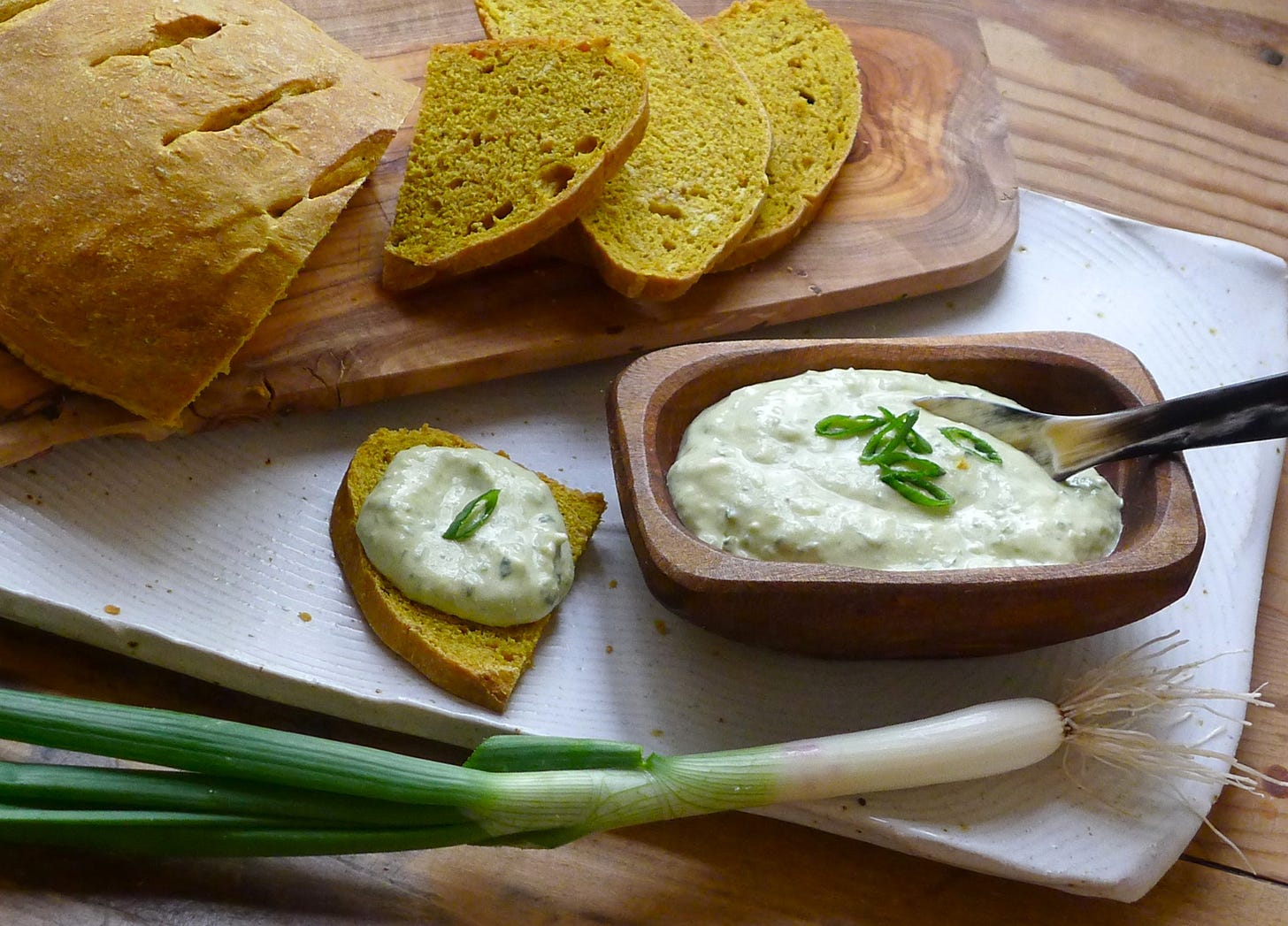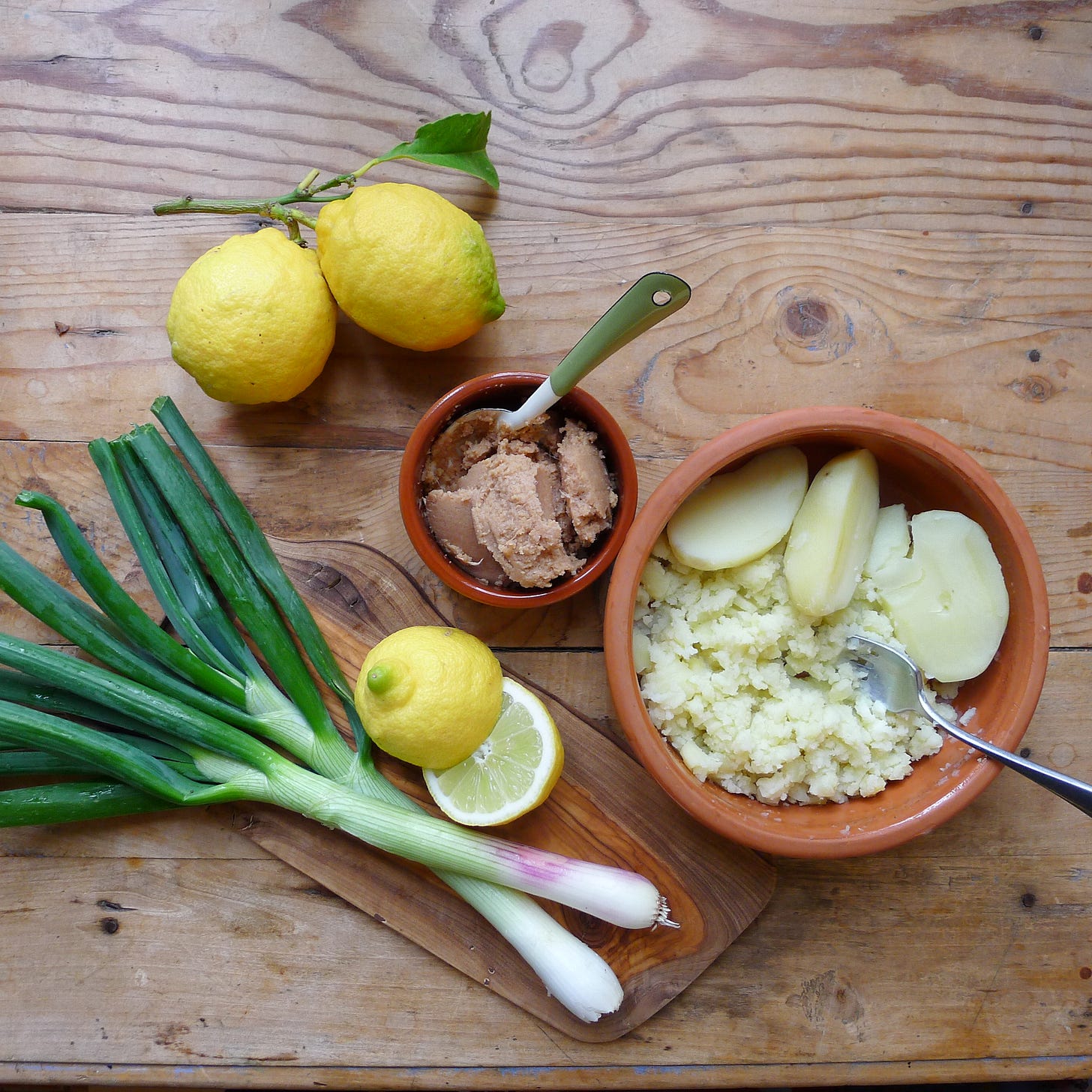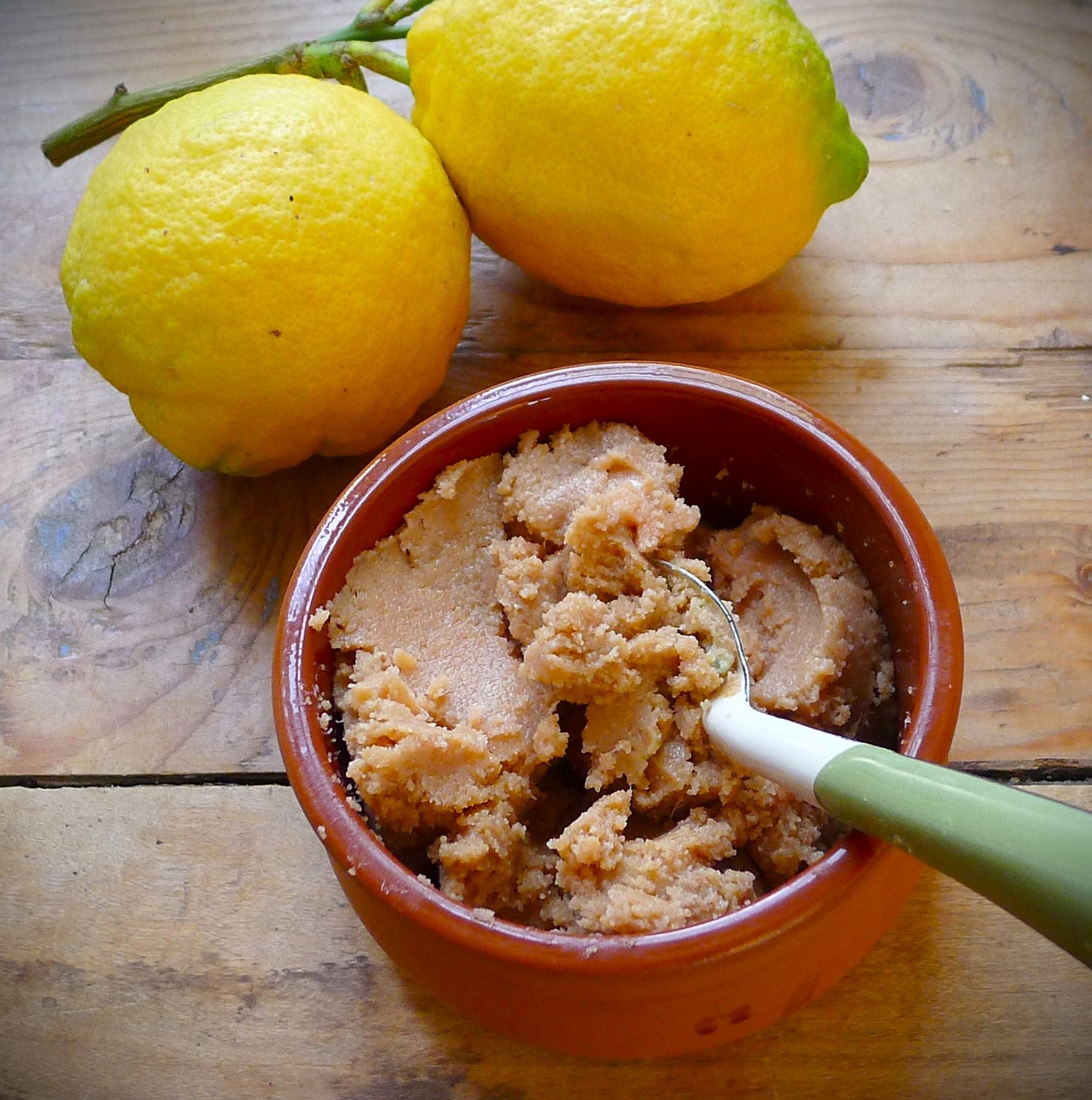Ode to taramosalata
The popular spread is always part of the festive lunch that marks the beginning of Lent next Monday, a public holiday in Greece.

I used to make rengosalata, my mother’s smoked herring spread but I hardly make it anymore: to create the iconic Lenten mezze I buzz in the blender a tab of good, smoky and fishy tarama with lots of freshly squeezed lemon juice and a couple of large scallions —green and white parts. Then I add some light oil —sunflower usually— and a few tablespoons of mashed potato. I taste the mixture and add more potato, and/or lemon, and finally, when I am satisfied with the flavor, I pour in some fruity olive oil to round up its taste (scroll down for the recipe).
Transferred to a bowl, taramosalata needs to rest in the fridge overnight for its final flavor to develop. The next day it may need some tweaking but usually it is exactly as I like it.
Our guests seem to love it as well, and cannot seem to get enough when I serve it on our welcome buffet. Although I offer lots of other little dishes, plus freshly baked flatbreads, they seem to favor this simple fishy spread, a staple of the Kathari Deftera table—Clean Monday, the first day of lent.

To non-Greeks, Clean Monday may sound like a feast rather than a fast. It often feels like the continuation of carnival with many local folk performances all over the country —most with explicit sexual connotations and crossdressing— that are meant to awaken and jump-start the earth from its winter sleep. The rules of orthodox fasting are somewhat peculiar, although they usually hide interesting explanations behind them. One of the basic commands is that no food containing red blood may be consumed. From this idea stem many unusual prohibitions.
For example, although olives are allowed even on Holly Friday, olive oil is not, because in traditional olive pressing the olive pulp was passed between matts woven from goat’s wool. Similarly, only mollusks (octopus, cuttlefish, calamari), crustaceans (shrimp, lobster etc.) and fish roe are permitted; the flesh of fish that has even the smallest traces of red blood is considered ‘meat,’ therefore not suitable for the Lenten table. In other words, fish roe, or even caviar are safely clean foods, most appropriate for that glorious first day of Lent; and so is wine!
The quest for the perfect taramosalata
This simple, fishy-lemony spread fascinates visitors as well as chefs internationally. The latter seem to seek a flavorful, yet airy consistence that we Greeks are not especially keen on, and my spread certainly lacks. In the ‘90ies, when I was consulting on the menu of the first upscale Greek restaurant in midtown NY, the chefs were enamored with the taramosalata served at a takeout on 9th avenue. After much research, they found out that club soda was whipped in at the end(!)

José Andrés, when he was gathering ideas in anticipation of the Zaytinya restaurant, before we met, traveled to Europe researching in restaurants the kinds of dishes he wanted to create for his Eastern Mediterranean mezze menu. “My first taste of this light, savory spread, rich in carp roe, did not take place sitting next to the sea in Greece. I was actually in a café in London called The Real Greek, run at that time by chef Theodore Kyriakou. The taramosalata was a revelation…I abandoned my pita and dove in with a spoon,“ he writes on the head-note for his recipe in the Zaytinya book. “We like to make the spread extra light and silky by folding in a bit of whipped cream,” José explains .
Odysea, the London purveyor of fine Greek Foods, has exceptionally good taramosalata which, of course, they only deliver in the UK.
Greek taverns are experimenting with bold new ways to serve the iconic spread. At Ergon Agora, in Athens, cuttlefish ink is added to the impressive black spread, while Murga, in Thessaloniki, serves its quite traditional taramosalata on a large rock, along with toasted pita.
The fish roe’s concentrated umami flavor is traditionally used to spike the taste of other Lenten dishes, among them the much appreciated taramokeftedes (tarama fritters): soaked and drained stale bread is mixed with tarama, chopped onion, and dill or other herbs, shaped into little balls, and fried in olive oil. Small amounts of tarama can also be added to the dressing for green salads, or sprinkled over boiled potatoes and/or cauliflower.
Green Taramosalata
The amounts of tarama, potato, lemon, and oil are just a starting point. Depending on the fish roe you get, you can adjust all other ingredients accordingly to get the fishy-lemony taste you will like. Keep in mind that the spread should have a prominent taste as it will be eaten with bread or pita.
Makes about 4 cups.
2/3 – 1 cup (about 120 grams) good quality pale (NOT pink) tarama or cured fish roe or thinly sliced smoked herring fillet (kippers) and/or roe (see note)




